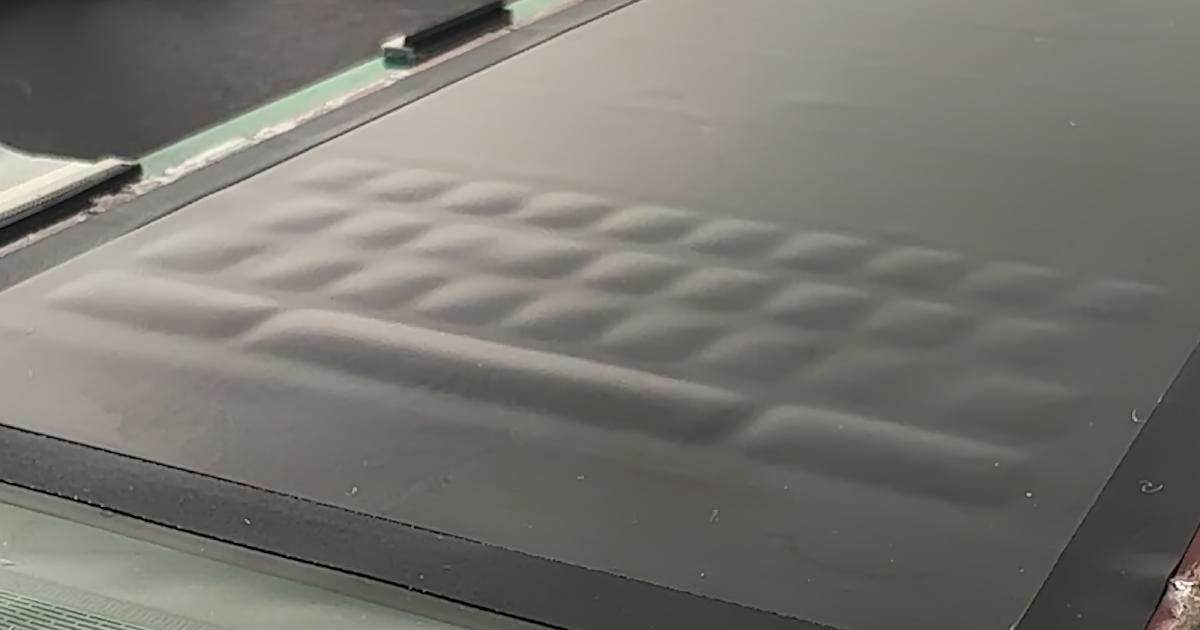Swiping and tapping on flat screens is something we’ve learned to deal with in smartphones, tablets and other touchscreen gizmos, but it doesn’t come close to the ease of typing on a hardware keyboard or playing a game with a physical controller. To that end, researchers Craig Shultz and Chris Harrison with the Future Interfaces Group (FIG) at Carnegie Mellon University have created a display that can protrude screen areas in different configurations. It’s a concept we’ve seen before, but this version is thinner, lighter and more versatile.
FIG’s “Flat Panel Haptics” tech can be stacked under an OLED panel to create the protrusions: imagine screen sections that can be inflated and deflated with fluid on demand. This could add a new tactile dimension for things like pop-up media controls, keyboards and virtual gamepads you can find without fumbling around on the screen
[…]
The Embedded Electroosmotic Pumps (EEOPs) are arrays of fluid pumps on a thin actuation layer built into a touchscreen device […] When an onscreen element requires a pop-up button, fluid fills a section of the EEOP layer, and the OLED panel on top bends to take that shape. The result is a “button” that sticks out from the flat surface by as much as 1.5 mm, enough to feel the difference. When the software dismisses it, it recedes back into the flat display. The research team says filling each area takes about one second, and they feel solid to touch.
[…]
this tech may remind you of Tactus’ rising touchscreen keyboard, which ultimately shipped as a bulky iPad mini case. FIG’s prototype can take on more dynamic shapes and sizes, and the research team says their version’s thinness sets it apart from similar attempts. “The main advantage of this approach is that the entire mechanical system exists in a compact and thin form factor,” FIG said in its narration for a demo video. “Our device stack-ups are under 5mm in thickness while still offering 5mm of displacement. Additionally, they are self-contained, powered only by a pair of electrical cables and control electronics. They’re also lightweight (under 40 grams for this device), and they are capable of enough force to withstand user interaction.”
[…]
Source: This OLED screen can fill with liquid to form tactile buttons | Engadget

Robin Edgar
Organisational Structures | Technology and Science | Military, IT and Lifestyle consultancy | Social, Broadcast & Cross Media | Flying aircraft

